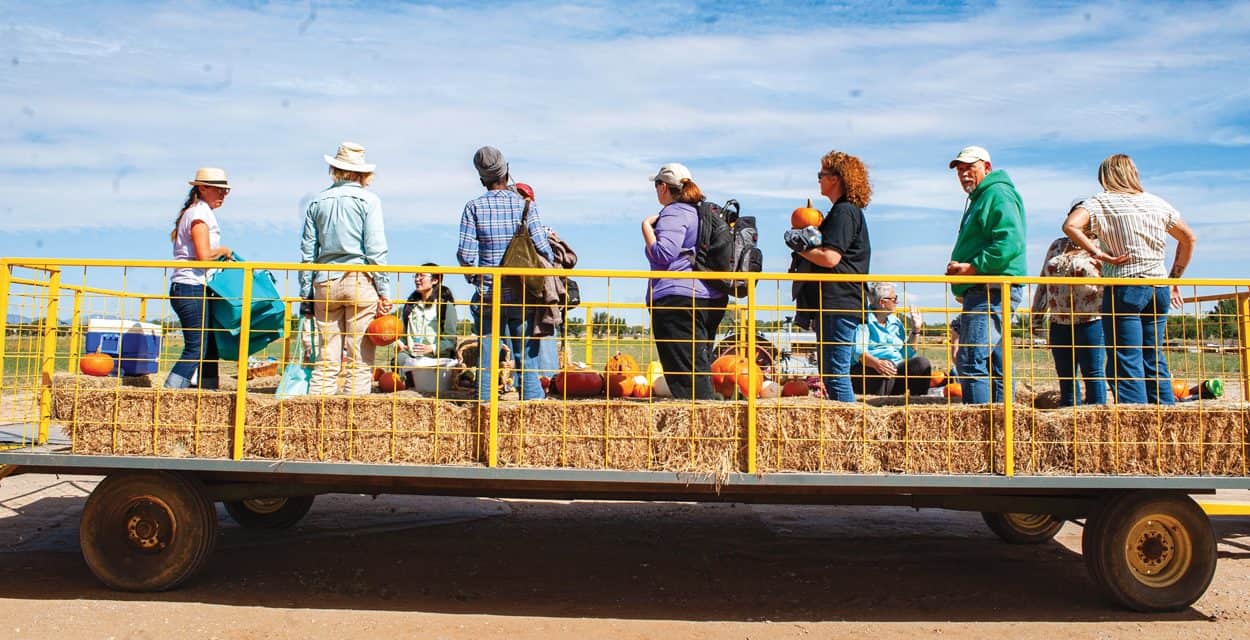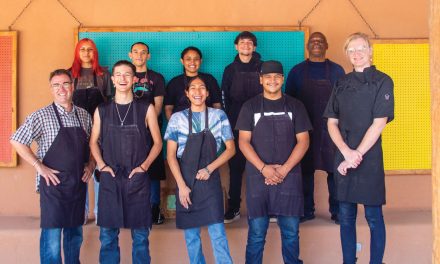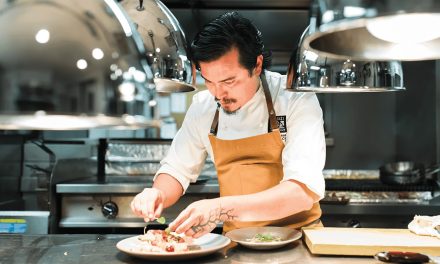INNOVATOR: FOOD JUSTICE
An Interview with Pam Roy, Executive Director and Cofounder
Photos by Seth Roffman

Since 1996, the nonprofit Farm to Table has worked to strengthen the economic livelihoods of farmers by building connections to local markets, and by facilitating sales of fresh local produce to institutions and restaurants. They bring healthy foods and experiential learning to schools through farm-to-school programs and have worked with communities on food policy, striving for equity in New Mexico’s food system. The organization has also worked collectively at the state and federal levels to advocate for effective food policy in New Mexico. Farm to Table’s mission is to build a local, healthy, equitable, and sustainable food system.
What influenced Farm to Table’s shift from its original focus on farmers market development twenty years ago?
Farm to Table was initiated because we saw a real need for three priorities: to build partnerships that would expand business opportunities for farmers and ranchers in New Mexico and the Southwest; to start farm-to-school initiatives in New Mexico and be part of a burgeoning initiative across the country; and to fulfill an unmet need for organized advocacy and policy work by starting the New Mexico Food & Agriculture Policy Council.
Talk about the value of community self-determination and how that applies to agriculture.
New Mexico’s communities have a deep context around food and agriculture traditions. Much of our work has focused on local food and agriculture initiatives that help communities build their own capacity. The more we can emphasize the importance of our traditional foodways, and the more people begin to value local food as individuals, the more we can create opportunities to advocate for and invest in the types of “systems” we need in order to strengthen local economic and social fabrics—thus strengthening community self-determination.

One of your great accomplishments has been connecting farmers with school cafeterias to provide New Mexican students with locally sourced lunches. Can you share a little about this program?
Part of our mission is to focus on the well-being of people and communities. We saw a real need to tie the health and well-being of communities, like schools, with beautiful, locally grown fruits and vegetables while developing a new market opportunity for New Mexico farmers. We also realized that it would take changing federal rules so that schools could purchase from local farmers. We focused on school nutrition, as more than three hundred thousand students participate in school meal programs. So, if we’re going to change systems and behavior, schools are a natural ally. As we look at twenty years of work, we are ecstatic to now have two-thirds of New Mexico schools purchasing New Mexico–grown food, and now senior centers can, too. It takes patience, perseverance, and the will to take on new programs at the local, state, and tribal levels. Now five state agencies are committed to this initiative—education, agriculture, aging, early childhood education, and health. There are more than seventy farmers, food hubs, and co-ops involved. There are school gardens in many communities around the state, tying what we eat to how we learn. And so many people care and help to advocate for these programs.
You’ve been awarded a Local Hero Award, and one of your partners/collaborators, Micah Roseberry, received edible’s Olla Award. You also issue your own annual local food and farm-to-school awards. Is there an individual or organization whose work has been inspiring you over the course of the pandemic?
Micah and her colleagues in Taos and northern New Mexico are a perfect example of community self-determination, leadership, and passion. They have vision and collective wisdom to take the tools at hand and find new resources to build out their local food system.
We have amazing organizations, communities, and individuals around the state who are game changers, as well as many who came before us. Just to name a few—La Semilla Food Center in Anthony, Tesuque Pueblo Farm and Emigdio Ballon, Dorothy Bitsilly of Red Willow Farm and Gloria Begay of the Diné Food Sovereignty Alliance on the Navajo Nation, the Zuni Youth Enrichment Program, Quivira Coalition’s New Agrarian Program, and the New Mexico Acequia Association!

What are your goals for the 2022 legislative session? How can readers engage and support local food in New Mexico?
This is the year that everything is coming together. Our goal is to see a multiyear New Mexico food, hunger, and farm plan passed by the legislature and then funded! Many people have been working collectively to strengthen the ties between food, hunger, and farming in New Mexico. The pandemic put an even greater emphasis on the need to strengthen and expand New Mexico’s own food system. These things combined are resulting in a large-scale, multiagency legislative initiative that we hope will result in a comprehensive plan to expand food and agriculture initiatives in New Mexico. Additionally, we think there will be comprehensive strategies to support soil, water, and conservation programs, which are also very important to advocate for and will ultimately strengthen our local food system.
Is there anything else you’d like to share with edible readers?
We are so grateful for edible and those who pick up the magazine to learn and engage in food in New Mexico. We need and welcome everyone’s voices at the table, in the halls of the legislature, on farms, and in schools and senior centers, to ask for local food. Our purchasing power is a great way to advocate for and collectively strengthen our local food system.













